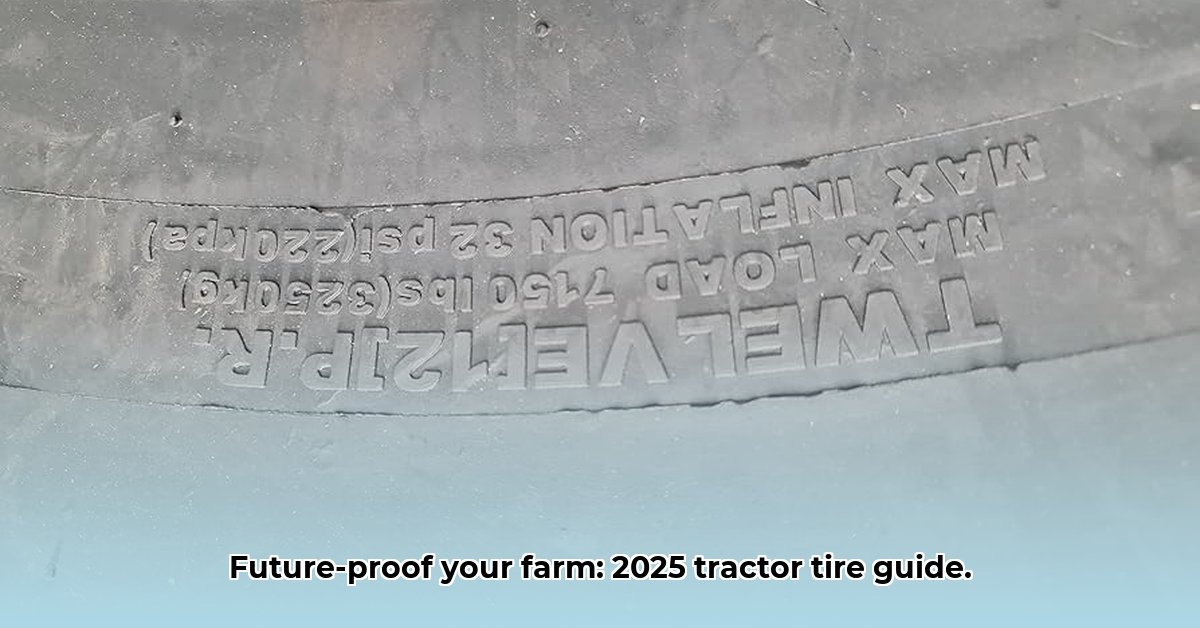
Understanding 18438 Tractor Tires: Size, Specs, and Performance
18.4-38 tractor tires are a common size known for their high load capacity (often exceeding 7,000 pounds). The "18.4-38" denotes their dimensions, while the ply rating (often 12-ply) signifies their durability. Their aggressive tread patterns, frequently featuring long bars angled at 45 degrees, provide excellent traction, minimizing slippage, and potentially improving field efficiency. However, this aggressive tread may increase rolling resistance and fuel consumption, an area requiring further investigation. Manufacturers often highlight puncture resistance; however, independent verification is needed to substantiate these claims and establish their real-world effectiveness across diverse soil conditions and farming practices. To understand the weight implications, see information on tire weight.
Environmental Impact: A Critical Assessment
While 18438 tires are essential for modern farming, their overall environmental impact remains unclear. A comprehensive life cycle assessment (LCA) – a detailed analysis of a product's environmental impact from cradle to grave – is currently lacking. This assessment is critical for understanding the use of materials (percentage of recycled rubber, presence of environmentally harmful chemicals), manufacturing processes, and end-of-life tire disposal methods. Without detailed LCAs, a definitive statement on the "greenness" of these tires is currently impossible. Continued research and testing are urgently needed to fill these knowledge gaps. This lack of data is a significant obstacle in advocating for sustainable practices.
Did you know? The production of these tires often occurs overseas, raising further sustainability concerns about the overall supply chain.
Cost-Effectiveness: Long-Term Considerations
The initial cost of 18438 tires is a factor, but long-term cost-effectiveness is paramount. Fuel efficiency is directly affected by rolling resistance: tires with higher rolling resistance consume more fuel, directly impacting operational expenses. Tire lifespan is another key determinant; a longer lifespan reduces replacement costs. However, premature tire wear can negate any initial savings and introduce unexpected expenses. Therefore, a comprehensive cost analysis should consider fuel consumption, tire lifespan, and replacement costs. A more expensive, durable tire might be more cost-effective in the long run, but this requires further data analysis comparing various models under different operating conditions. Determining the true cost-effectiveness requires detailed comparative data, currently unavailable for a full assessment.
Sustainable Practices: Actionable Recommendations
Improving the sustainability of agricultural tire use requires a multi-faceted strategy involving farmers, manufacturers, and policymakers.
For Farmers:
- Implement precise data tracking: Maintain detailed records of tire performance (fuel consumption, soil health indicators). This data informs future purchasing decisions.
- Explore alternative tire options: Investigate tire designs and materials prioritizing sustainability.
- Demand transparency: Request detailed information from manufacturers concerning material composition and environmental impact.
For Manufacturers:
- Conduct comprehensive LCAs: Conduct detailed lifecycle assessments to quantify environmental impacts.
- Invest in R&D for sustainable materials: Develop more eco-friendly materials and tire designs optimized for fuel efficiency and minimal environmental impact.
- Promote transparency: Publicly share information on materials, recycling programs, and environmental certifications.
For Policymakers:
- Implement financial incentives: Introduce subsidies or tax breaks for adopting sustainable tire practices and responsible end-of-life management.
- Fund research and development: Increase funding for research into sustainable agricultural tires and improved disposal strategies.
- Consider environmental regulations: Explore potential regulations requiring sustainable tire materials and responsible waste management.
Conclusion: Paving the Way for Sustainable Agriculture
The agricultural sector requires durable, high-performance tires. However, minimizing environmental impact is non-negotiable. The 18438 tire serves as a case study highlighting the need for comprehensive life cycle assessments and comparative analyses to guide sustainable practices. Addressing the research gaps surrounding 18438 tires and similar products is crucial for building a more sustainable future for agriculture. This requires continued research, collaboration among stakeholders, and a commitment to continuous improvement across the agricultural supply chain.